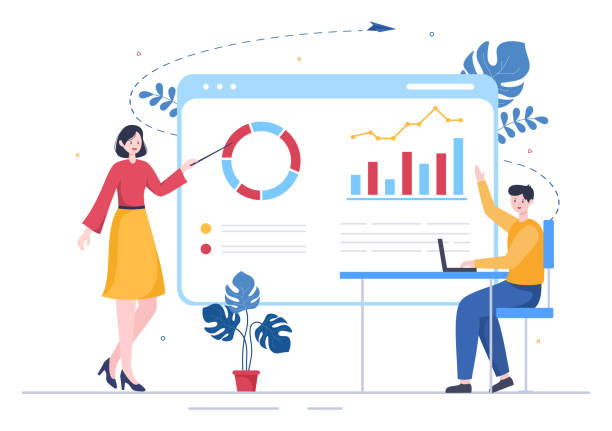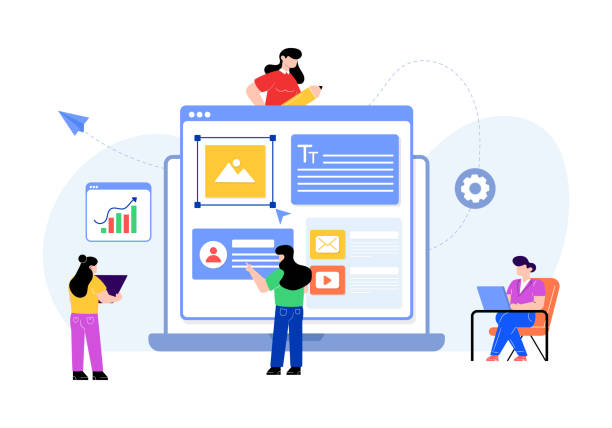Introduction to Multilingual Website Design: Why and How?

In today’s world, where geographical borders have lost their meaning in the virtual space, the need to connect with audiences worldwide is felt more than ever.
This is where the concept of multilingual website design gains vital importance.
A multilingual website is a platform that offers its content in several different languages, enabling businesses, individuals, and organizations to access new markets and connect with audiences beyond their native language boundaries.
This approach not only makes global reach possible, but also significantly enhances a brand’s credibility and professionalism.
Imagine having a unique product, but its descriptions are only available in one language; how much global market potential are you losing? Multilingual website design can be considered a strategic investment for growth and expansion of activities.
This educational section is the cornerstone for understanding the importance of this topic and starting the journey towards its implementation.
By providing information in the audience’s native language, you not only improve their user experience but also significantly increase their chances of engagement and loyalty.
This is a crucial step for any business that dreams of globalizing and wants to be a leader in the intense online competition.
Disappointed with your online store’s low conversion rate? RasawWeb transforms your online store into a powerful tool for attracting and converting customers!
✅ Significant increase in visitor-to-buyer conversion rate
✅ Unparalleled user experience for increased customer satisfaction and loyalty⚡ Get a free consultation from RasawWeb!
Undeniable Advantages of Multilingual Websites in the Digital Age

Why should we opt for multilingual website design to increase visits and expand our influence? The benefits of this approach are not limited to accessing new markets.
One of the most important is the significant improvement in multilingual SEO and international search engine optimization.
By providing content in multiple languages, your website has a greater chance of ranking in local searches in different countries, which means increased organic and targeted traffic.
This analytical section delves deep into these advantages.
In addition to SEO, user experience is also significantly enhanced.
Users prefer to read content in their native language, and this sense of comfort and familiarity leads to increased conversion rates and reduced bounce rates.
Did you know that multilingual websites can help you in building trust among international audiences? When you value your audience and provide information in their language, a stronger relationship is formed.
This approach not only increases sales and attracts new customers but also establishes your brand as a global and trustworthy entity.
Furthermore, the ability to provide multilingual customer support and customer service is a major competitive advantage that can greatly increase customer loyalty.
Consequently, investing in multilingual website design is more than an expense; it’s a profitable investment in the future of your business.
Key Considerations Before Starting a Multilingual Website Design Project
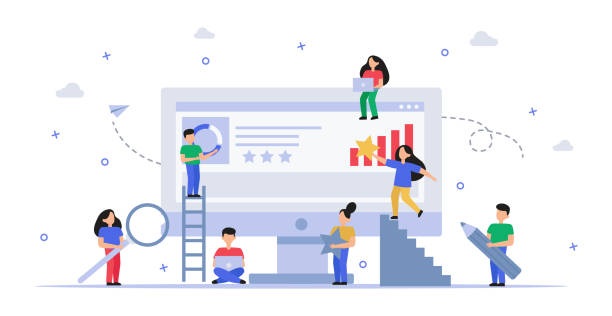
Before diving deep into multilingual website design, detailed planning and considering content and target language are of high importance.
This specialized stage requires strategic decisions that affect the entire project.
The first step is to identify the languages into which you intend to translate your website.
This choice should be based on the target market, audience demographics, and growth potential.
Do you only need common languages like English, Spanish, and Chinese, or can more specific languages also be beneficial for your business? After selecting the languages, it’s time to plan for content translation.
Do you use professional translators or opt for machine translation solutions? Translation quality directly impacts your user experience and brand credibility.
Translated content must not only be grammatically correct but also culturally compatible with the target audience.
This section should also address technical issues such as URL structure, using hreflang tags, and selecting an appropriate Content Management System (CMS) that supports multilingual capabilities.
Ignoring these details can lead to SEO problems and user confusion.
The goal is for your website to have the same performance and user experience as the original website in every language.
Multilingual website design goes beyond simply translating words; it is a comprehensive process that requires a deep understanding of cultural and technical differences.
Below is a table of key considerations before starting a multilingual website design:
| Consideration | Explanation | Importance |
|---|---|---|
| Language Selection | Based on target market and audience demographics | Very High |
| Translation Quality | Using professional translators and content localization | Very High |
| URL Structure | Subdomains, subfolders, or top-level domains (gTLD) | High |
| Content Management System (CMS) | Support for multilingual capabilities | High |
| Cultural Compatibility | Colors, images, date and currency formats | Medium |
Technical Approaches in Implementing Multilingual Website Design

When planning for multilingual website design, one of the most important technical decisions is choosing the appropriate technical method for organizing different languages.
These approaches include using subdomains, subfolders, or country-specific top-level domains (gTLD).
Each of these methods has its own advantages and disadvantages in terms of SEO, management, and costs.
Subdomains (e.g., en.example.com) help search engines recognize content as separate but related parts of the main domain.
Subfolders (e.g., example.com/en/) are usually the simplest option to implement and contribute to the main domain’s authority.
Finally, country-specific top-level domains (e.g., example.de) provide the strongest signal to search engines for local targeting, but their management and maintenance can be more costly.
This guidance section helps you choose the best option based on your needs and goals.
Additionally, you must pay attention to other technical details such as how to manage images, CSS, and JavaScript files for each language, and ensure correct website functionality in all languages.
Choosing a powerful and flexible CMS that fully supports multilingual capabilities (such as WordPress with plugins like WPML or Polylang, or Drupal and Joomla) can greatly facilitate the implementation and management process.
These technical decisions form the backbone of a successful multilingual website design and will directly impact your website’s performance, discoverability, and user experience.
Are you losing business opportunities due to an outdated website? With RasawWeb, solve the problem of not attracting potential customers through your website forever!
✅ Attract more high-quality leads
✅ Increase brand credibility in the eyes of customers
⚡ Get a free corporate website design consultation from RasawWeb!
Content Management and Translation Strategies for a Multilingual Website
![]()
After deciding on the technical approach, it’s time for content management and automatic translation, which are vital aspects of multilingual website design.
This specialized stage requires choosing between different translation approaches, including human manual translation, Machine Translation (MT), or a combination of both.
Manual translation offers the highest quality and accuracy and can effectively capture cultural nuances and brand tone, but it is time-consuming and costly.
In contrast, machine translation is faster and cheaper, but it may have less accuracy and require human editing to ensure text correctness and fluency.
Professional translation services can be of significant help in this regard.
Choosing an appropriate Content Management System (CMS) that fully supports multilingual capabilities is crucial at this stage.
This CMS should allow for easy management of different language versions, synchronized content updates, and applying Machine Translation Post-Editing (MTPE).
Additionally, for dynamic content such as user comments, blog posts, or news, there must be a defined process for continuous translation and content updates across all languages.
This guidance section helps you adopt an appropriate strategy to maintain content quality and consistency in all languages.
Multilingual website design with poor content management will not only be useless but can also harm your brand’s credibility.
Therefore, investing in efficient translation and content management processes is essential for long-term success.
The Importance of SEO in Multilingual Website Design for Global Success
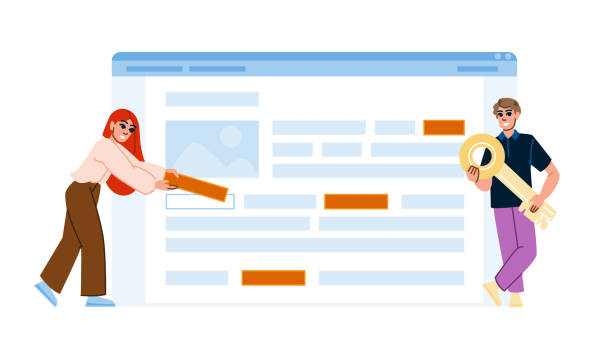
For a multilingual website design to be truly successful, simply translating content is not enough; search engine optimization (SEO) in each language is also of paramount importance.
This specialized section addresses the key aspects of international SEO.
One of the vital tools in this area is the correct use of the hreflang tag.
These tags tell search engines like Google that different versions of a page exist for specific languages or regions, which helps display the correct language version to users in search results.
Failure to use or incorrect use of hreflang tags can lead to duplicate content issues and reduced SEO rankings.
Furthermore, local keyword research is essential for each language and geographical region.
Words popular in one language or culture may differ in another.
Using local keyword research tools and understanding the search needs of your target audience helps you optimize your content for maximum visibility.
Additionally, international targeting in Google Search Console and Bing Webmaster Tools sends stronger signals to search engines about your target audience.
Local Link Building can also help increase your website’s authority in international markets.
Ignoring SEO in multilingual website design is like building a strong bridge that no one knows how to cross.
The ultimate goal is not only to reach new audiences but also to ensure they can discover you through search engines.
A multilingual website that is properly optimized for SEO can become the driving force for your international growth.
Improving User Experience (UX) in Multilingual Website Design

Beyond mere translation and technical optimization, one of the most important pillars of a successful multilingual website design is focusing on user experience (UX).
This guidance and engaging section shows you how to provide a seamless and satisfying user experience for visitors from anywhere in the world.
The first step is to design a clear and accessible language selector.
This selector should be easily visible on the website and allow users to select their desired language with a few simple clicks.
The important point is that languages should be displayed by their native names (e.g., “Deutsch” instead of “German”) to be recognizable to international users.
But UX in multilingual website design is not limited to language selection.
Content localization, including date and time formats, currency, addresses, phone numbers, and even colors and images, can deeply impact the user’s perception.
An image or color that has a positive meaning in one culture might cause misunderstanding in another.
This guidance section helps you design your website to be attractive and understandable for users in all regions, by considering local culture and cultural differences.
The ultimate goal is to create a sense of comfort and confidence in users, as if your website was specifically designed for them.
Multilingual website design with strong UX not only increases conversion rates but also helps build long-term customer loyalty.
Below is a table of key UX elements in multilingual websites:
| UX Element | Explanation | Impact on User |
|---|---|---|
| Clear Language Selector | Displaying native language names and easy placement | High convenience and accessibility |
| Date and Time Localization | Displaying date and time according to local format | Increased understanding and relevance |
| Currency Unit | Displaying prices with local currency and conversion rate | Increased transparency in purchasing |
| Cultural Images and Symbols | Using images and symbols appropriate to the target culture | Building a sense of closeness and trust |
| Support for Contact Formats | Local phone numbers, addresses, and postal codes | Ease of communication |
Common Challenges and Obstacles in Multilingual Website Design and Solutions
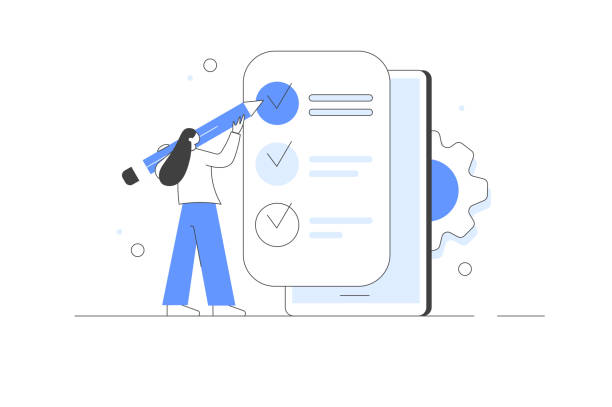
Despite numerous advantages, implementing and managing a multilingual website design can come with challenges and obstacles.
This thought-provoking and analytical section examines these common problems and provides practical solutions.
One of the biggest challenges is maintaining content quality and consistency across all languages.
Simply translating words is not enough; it must be ensured that the tone, message, and even jokes and cultural references are correctly conveyed.
This is where the importance of true localization, beyond literal translation, reveals itself.
Another challenge is the ongoing maintenance and updating of the website.
With every content update in one language, it must be ensured that translated versions are also updated quickly and accurately.
This process can be time-consuming and complex, especially for websites with dynamic content.
Technical issues can also be troublesome; including managing complex hreflang tags, choosing the right server for loading speed in different parts of the world, and solving multilingual SEO issues.
Additionally, cultural differences in UI/UX design and user expectations can cause confusion.
For example, text direction (right-to-left or left-to-right), the use of colors and symbols, and even how contact information is displayed should be carefully considered.
Multilingual website design requires a comprehensive approach and precise planning to prevent these problems from arising.
Consulting with localization specialists and using translation management tools can significantly help reduce these challenges and prevent resource waste.
Is your business ready to face these complexities?
Does your current online store design lead to losing customers and sales?
RasawWeb is your solution with modern and user-friendly online store designs!
✅ Significant increase in conversion rates and sales
✅ Creating strong branding and gaining customer trust
⚡ Get a free online store design consultation from RasawWeb!
Measuring Success and Future Trends in Multilingual Website Design

After implementing a multilingual website design, the next step is measuring success and monitoring its performance.
This news and analytical section discusses the importance of using analytical tools and examining future trends in this field.
Using tools like Google Analytics is crucial for monitoring traffic, conversion rates, and user behavior in each language.
This data can provide valuable insights into which languages yield the most returns and where improvements are needed.
Metrics such as Bounce Rate, Time on Page, and Conversion Rate should be examined separately for each language version to determine the website’s effectiveness in each market.
A/B testing for different content and design versions in various languages can also help with continuous optimization.
Regarding future trends, significant advancements in artificial intelligence and machine learning, especially in the field of Neural Machine Translation (NMT), promise a future where content translation will be faster, more accurate, and more localized.
These technologies can revolutionize multilingual website design, making it more accessible for small and large businesses.
Also, the increasing trend of multilingual video and audio content, and the need for their localization, are other important trends.
Multilingual websites are moving towards greater personalization based on user location and language.
This means providing even more precise and relevant content to each visitor, elevating the user experience to a new level.
By being aware of these trends, businesses can prepare themselves for the future and leverage the full benefits of a multilingual strategy.
Conclusion and Best Practices for Successful Multilingual Website Design

At the end of this comprehensive review of multilingual website design, we can reach a clear conclusion: in today’s connected world, a multilingual website is no longer a luxury option, but a strategic necessity for any business looking to grow and expand globally.
This guidance and explanatory section summarizes the most important best practices to ensure the success of your project.
The first and most important recommendation is detailed planning.
Before starting any translation or technical implementation, you must define your target audience, desired languages, and marketing strategies.
Never sacrifice translation quality for speed; high-quality content that is culturally localized builds your credibility.
Use professional translators and invest in review and editing processes.
Technically, ensure proper URL structure (subfolder, subdomain, or ccTLD) and correct use of hreflang tags to optimize your website’s SEO.
Choose a powerful and multilingual Content Management System (CMS) that simplifies content management and updates.
Also, pay special attention to user experience (UX) in each language; from a clear language selector to localizing date and currency formats and images.
Finally, do not forget continuous monitoring and optimization through analytical tools.
The digital world is constantly changing, and your website must keep up.
Multilingual website design is a long-term investment that, by following these tips, can become a powerful engine for global growth for your business.
Are you ready to transform your website into a gateway to the world?
Frequently Asked Questions
| Question | Answer |
|---|---|
| What is multilingual website design? | It is the design of a website whose content is available to users in multiple languages, allowing users to choose their preferred language. |
| Why is a multilingual website important? | To access international audiences, increase website traffic, improve user experience for non-Persian speaking visitors, and expand business in global markets. |
| What are the benefits of having a multilingual website? | Increased international SEO, attracting new customers from different countries, enhancing business credibility and professionalism, and reducing bounce rate by providing understandable content. |
| What are the methods for implementing a multilingual website? | Using subfolders (e.g., example.com/en/), subdomains (e.g., en.example.com), or separate top-level domains for each language (e.g., example.com and example.de). |
| Which URL structure is best for international SEO? | Subdirectories (e.g., example.com/en/) are often preferred for SEO due to consolidating the main domain’s authority, although each method has its advantages and disadvantages. |
| How does a multilingual website affect SEO? | By providing content in different languages, the site appears in local search results for those languages, click-through rates and traffic increase, and the overall domain authority of the site improves. Correct use of hreflang tags is crucial. |
| How is content translation managed? | Professional translators, machine translation tools (with human editing), or content management systems (CMS) with built-in multilingual capabilities or relevant plugins can be used. |
| What are common challenges in multilingual website design? | Managing translated content, maintaining design consistency across different languages, adapting to right-to-left (RTL) languages like Persian and Arabic, optimizing SEO for each language, and choosing an appropriate URL structure. |
| How do I manage text direction (LTR/RTL) on a multilingual site? | For right-to-left languages (like Persian), you need to apply specific CSS styles to change text direction, element layout, and table direction. This is often done using the direction: rtl; property and other related settings. |
| How can users change the website language? | Typically, by using a button, a dropdown menu, or a language selector widget clearly placed in the site’s header or footer. Automatic detection of the user’s browser language and offering a language change is also common. |
And other services of RasaWeb Advertising Agency in the field of advertising
Smart Marketplace: A specialized service for increasing sales growth based on marketing automation.
Smart Direct Marketing: A combination of creativity and technology for campaign management through key page optimization.
Smart Content Strategy: A specialized service for customer acquisition growth based on key page optimization.
Smart Marketplace: Revolutionize SEO ranking improvement with Google Ads management.
Smart Reportage: An innovative platform to improve website traffic with marketing automation.
And hundreds of other services in the field of internet advertising, advertising consulting, and organizational solutions
Internet Advertising | Advertising Strategy | Advertorial
Resources
Multilingual Website Design TutorialSmart Website and the Future of BusinessSEO Optimization for Multilingual WebsitesComprehensive Guide to Building a Multilingual Website
? To elevate your business in the digital world and reach the pinnacle of success, RasaWeb Afarin Digital Marketing Agency is always by your side, offering services such as custom website design, SEO, and content marketing.
📍 Tehran, Mirdamad Street, next to Central Bank, Kazeroon Janubi Alley, Ramin Alley, No. 6

